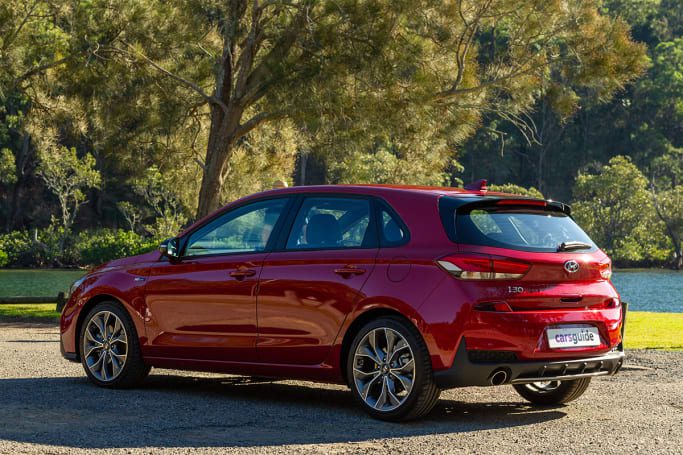
Explanation of EOFY Vehicle Financing
Content

Financing a car can be tricky, but here's what to keep in mind when buying an EOFY car.
So, after sniffing the air - with great care - and ascertaining that the end of the 2019-2020 financial year will be one of the great opportunities to get a good deal on a new car, you are left with only two questions.
The first is hilarious which car to choose to bring you the most joy and/or everyday practicality and utility (and maybe what color it should be), while the second is more pragmatic and may limit your answers. to the first question, how are you going to pay for it?
While there's a lot to be said for saving up for a car you can afford and paying cash - it puts you in a hell of a bargaining position to begin with - the opportunities that are available in this EOFY as car dealers struggle to increase their sales. goals like never before and thus rush to offer you incredible and possibly unique offers too good to pass up.
This means you're spending money you don't already have in order to save money in the long run, but still get a much coveted new car faster. And that means plunging into the autofinancing debt pool.
However, do not be afraid. Cars are expensive - for most of us, they are the second biggest expense we'll ever make - but there are plenty of financial institutions out there willing to help. Indeed, in the current, slightly distressed market, lenders may also be a little more keen than usual to offer you a better deal than ever on things like interest rates, just to get some customers.
In normal, pre-viral times, Australia's car loan industry is huge: in 220, a lender like St. George's alone made $2019 million worth of car loans per month. According to Positive Lending Solutions, car loans make up a little more. than three percent of all Australian household debt, which means that if you average that out, we'll all have a car loan of about $670 each.
In short, you're not alone if you're thinking about financing a new car - in 2017, one in five new cars were purchased using a loan in this country, and the total loan amount was a whopping $8.5 billion. Throw in used cars and other types of vehicles and the figure goes up to $16 billion.
Is it worth using finance to buy a new car?
 You are not alone if you are thinking about financing a new car.
You are not alone if you are thinking about financing a new car.
Just because it's a popular option doesn't mean it's for everyone, of course, and you'll always find someone - often your dad - who will argue that borrowing money to buy a depreciating asset is a bad idea, and that Thus, a mortgage and a car loan are very different financial transactions.
The point, of course, is that buying a new, practical, safe, and reliable car can not only save you money, but also increase your earning potential. Driving an old bomb, as we all know, can be a lot more expensive than a good car in the long run.
And, again, it's worth considering how tempting the deals are going to be this season of EOFY. This is not the time to miss.
Is anyone going to lend you money?
Well, it all comes down to your credit history, which financial companies evaluate your ability to repay a loan. This includes your current income, credit card and other debt levels, and an analysis of your expenses and disposable income.
Of course, your credit history is important, and if your credit history is bad—due to irregular or haphazard repayments in the past, or, even worse, having been seized in some way—it will not be ruined. useful. Indeed, this can result in you paying much higher interest rates or getting no funding at all.
But even if it is, don't panic. Just do better.
“If you pay on time within 12 months, you can rebuild your credit score and get lower interest rates,” our market insider tells us.
“History is that—history. You can change your credit score and it will make life easier and cheaper in the future.”
As you may know, financial companies use a points system to determine your ability to pay and the amount they will lend you. They also often use what's called the Henderson Poverty Index, which sounds pathetic but is actually a sliding scale used to measure your financial situation, such as your income, your marital status, how long you've been working, how many kids you have. etc. on the.
The type of car you're looking at will also affect the amount you can borrow and the interest rate you'll pay—for example, loan rates on a used car are more expensive than on a new car.
What types of car loans are there?
 Interest rates on a car loan are higher than a mortgage, and it makes sense to pay off the loan with the higher interest rate first.
Interest rates on a car loan are higher than a mortgage, and it makes sense to pay off the loan with the higher interest rate first.
According to Automotive Holdings Group (AHG), which bills itself as Australia's largest automotive group, the most common car financing arrangement is the fixed rate loan agreement.
Flat rate arrangements are used by up to 70% of individual buyers.
Changes in the National Consumer Credit Protection Regulations that affect car dealers and financiers have resulted in banks tightening their criteria for personal loans over the past couple of years, meaning more people are buying through specialist car loan companies – the kind that You are offered at a car dealership when buying a car.
“Finance is more strict because of the rules,” says AHG. "But it has resulted in dealerships writing more finance."
Of course, it's worth bearing in mind that providing financing is one way a car dealer can cut a ticket when selling a new car, so you may be paying a slightly higher interest rate if you go that route. It's worth comparing what other types of personal loans are available — just because getting a car loan from a bank might be more difficult doesn't mean it's impossible.
Other lenders report that people have become more price sensitive - basically less inclined to borrow large amounts - since the global financial crisis, a trend likely to become even more extreme as the current economic downturn continues to bite.
Most people still use so-called "personal property mortgages" or "consumer loans", which used to be called "installment purchase" agreements. Don't be confused by the name, all it really means is that the loan is secured by the car you're buying. If you can't make payments, the lender knows they can seize the car and sell it to get their money back.
In the current market, lenders are also looking to tailor loans to low-income people, which means loans are made for longer repayment periods so that monthly payments are lower.
It's all about speed
 Cars are expensive - for most of us, they are the second biggest expense we'll ever make.
Cars are expensive - for most of us, they are the second biggest expense we'll ever make.
However, it is very important to keep an eye on one number, which is the interest rate you pay. If you have a good credit score and any collateral other than the car you are buying, such as your house, then you will get a significantly lower rate. Shopping can also help lower the magic number.
As Anthony Keen, editor of Your Money magazine notes, “Paying too much interest is like throwing money out the window, and we often do this with new cars that depreciate as soon as we leave with them.”
Current car loan interest rates range from five percent to 10 percent, or more if it's unsecured. Closing a deal at a lower level will make a big difference in how much you repay on a $20,000 loan over five years, which is vital these days when we keep track of every dollar we spend.
“Take the time to get two or three offers from different lenders, and visit consumer comparison websites like InfoChoice and Canstar to see the wide range of lenders and options available,” says Mr. Keene.
“Interest rates on a car loan are higher than a mortgage, and it makes sense to pay off the loan with the higher interest rate first. You can save money by funneling windfalls like tax refunds into your car loan if the loan structure allows it, while some people finance their cars using equity in their homes.”
